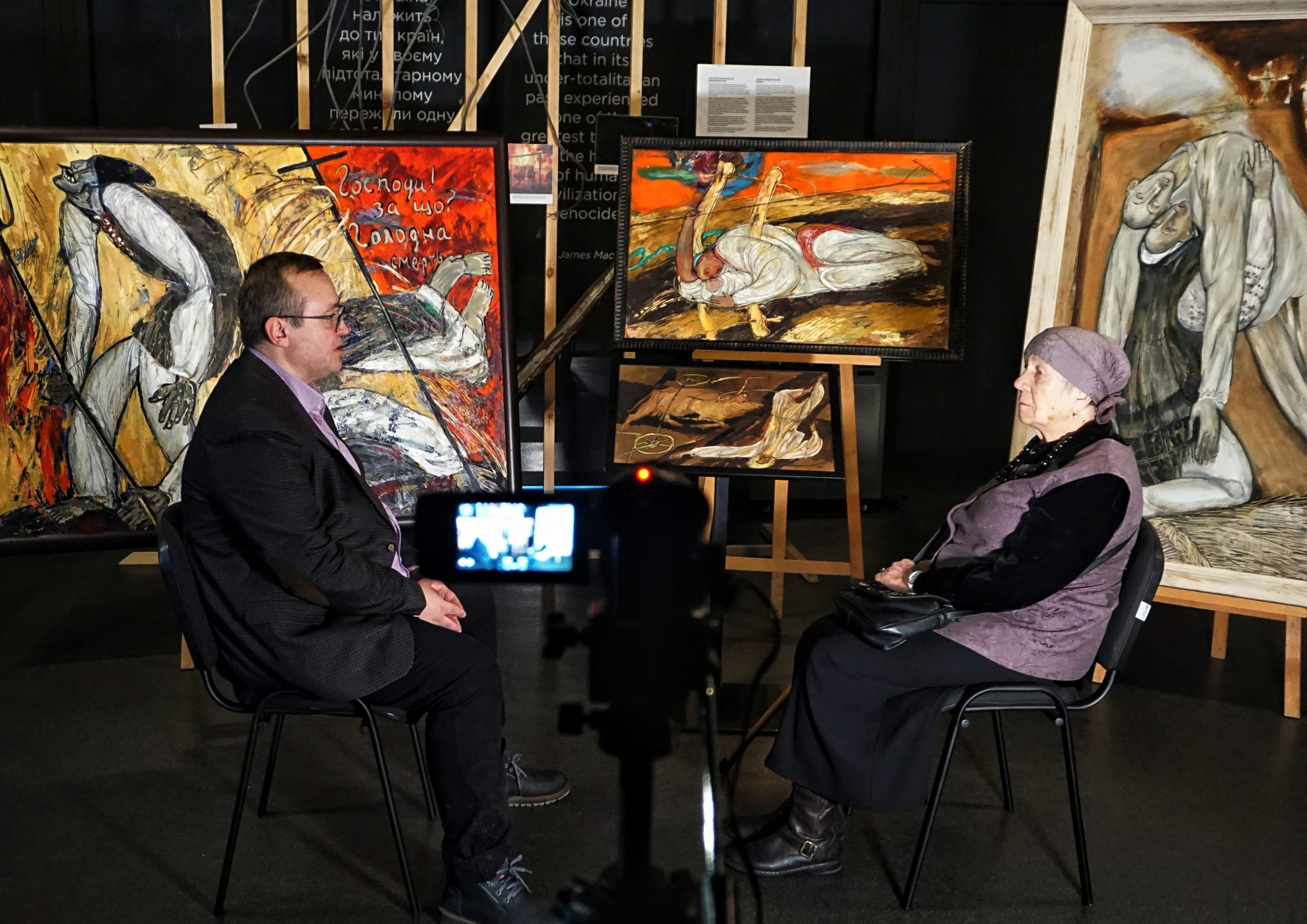Ukrainian artist Vira Barynova-Kuleba visited the Holodomor Museum
On Thursday, February 13, the Holodomor Museum hosted Ukrainian artist Vira Barynova-Kuleba, whose works are part of our collection. The museum’s senior researcher, Andrii Ivanets, recorded an interview with Ms Vira to learn more about her paintings on the Holodomor topic and the creative path of the artist, who was recently nominated for the Shevchenko Prize.
“I was born in the Poltava region on a farm in a peasant hut. I was born almost dead, with the umbilical cord tangled. My grandmother, who “caught” me, said: “Oh, this child is lost in the world…” It was December 1, 1938. To save me, my father rode his bicycle all the way to Rymarivka. He brought a young midwife named Vira. That’s how they called me Vira,” the artist says.
Her first Art teacher was her mother, a creative person with a keen sense of the world around her. Her first brushes were made of cat hair because there was nowhere to buy real ones. Her mother drew her first horse for the composition required for entering art school on the theme “The Lay of Igor’s Campaign,” because Vira, who grew up in the village, had never seen a horse – there weren’t any in the village then!
In the Holodomor, Ms Vira lost her grandfather Mykola and grandmother Marfa, whom she knew only from her parents’ stories. But it was to them that she dedicated several of her paintings about the tragedy of the genocide. As a child, she experienced the famine of 1946-1947.
“I was always concerned about why people were dying of hunger in places where there was always a lot of bread. Those who grew it died. Dad often repeated: “Lord, why?” That’s how this plot was born for me with Grandma Marfa and Grandpa Mykola. Grandpa no longer looks like a human being but has turned into sort of suffering creature,” tells the artist about the work “Lord! For what?”.
She calls paintings on the theme of the Holodomor “torn from the soul,” healing because “the artists heal themselves with such paintings.” We are proud to have them in our collection. We are sincerely grateful to the patron, Morgan Williams, for this.
Read the interview with Vira Barynova-Kuleba later on our resources.
